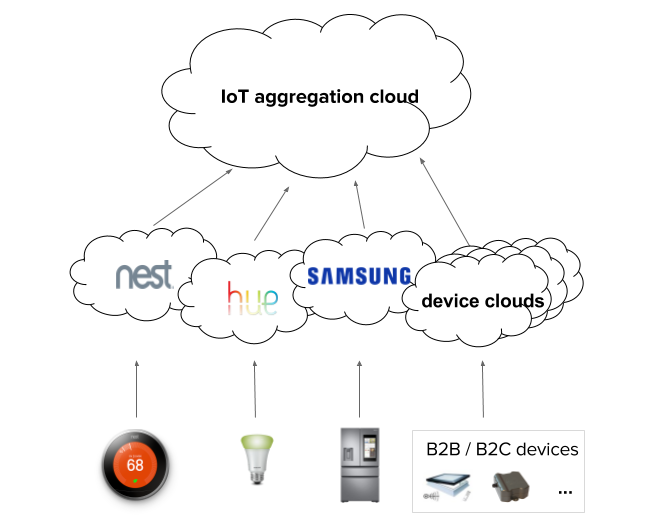Now that IoT is getting more mainstream, every device vendor has gotten or is in the process of getting their products connected. B2B and B2C devices or appliances communicate with a device cloud that is device vendor specific.

Clouds, clouds everywhere
As each of these vendors comes with its own IoT device cloud, if you are a service company working with smart devices and appliances from multiple vendors, you are confronted with a sprawl of IoT platforms which bring about a whole set of new challenges for you:
- Lack of a holistic view across the entire population of appliances.
- Multiplication of integration efforts with back-end IT systems, as essentially this needs to be done for each and every IoT device cloud.
- Multiplication in training effort, as both your technical and support teams need to become familiar with multiple tools, in order to analyze data and identify potential issues.
It does not look nice, but unfortunately, this is the current state of IoT.
What are your options?
So what can you do as a service company? We see two broad options:
- You could build your own IoT device cloud and just bypass the IoT solutions from the appliance vendors. While viable in some cases, it implies additional cost in HW (add-ons to existing products). Moreover, creating a device cloud takes time and effort, and you are a service company, not a product company, right?
- You could rely on an IoT aggregation cloud. The IoT aggregation cloud is different from a traditional IoT platform. The traditional IoT platform is a device cloud, that securely onboards devices and has strong features in the domains of connectivity and device management. The IoT aggregation cloud interacts with all these IoT device clouds, via cloud-to-cloud integration.

What does an IoT aggregation cloud do?
Typical functions of an IoT aggregation cloud include:
- It aggregates and normalizes data.
- It exposes data in a unified format to IT systems and is the single hub for integration.
- It provides a single visualization tool for data independent of the underlying device cloud vendor.
- It has open interfaces for data analysis and provides rules engine & automation capabilities.
The central idea is that, surely on the short term and very likely also on the long term, the multiple parallel IoT solutions will co-exist. Rather than trying to replace these device clouds, the IoT aggregation cloud is a unifying software layer on top, that solves the aforementioned problems.
Waylay is an aggregation cloud, exclusively focussed on cloud-to-cloud integration in the context of multi-vendor IoT to IT integration.

















